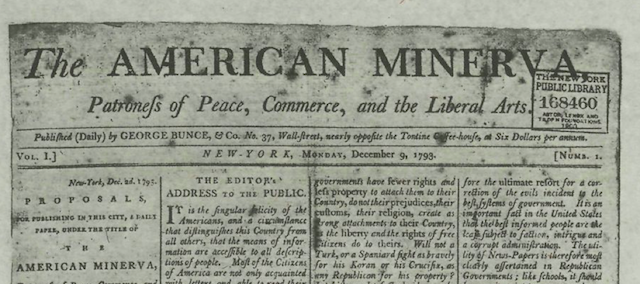On December 9, 1793, American Minerva, believed to be America’s first daily newspaper, was printed by George Bunce & Co. at 37 Wall Street in New York City. This was near the Tontine Coffee House.
On this first day of publication, almost the entire front page contained an address to the public from editor and publisher Noah Webster. Webster, who is responsible for creating Webster’s Dictionary, which was first known in 1806 as A Compendious Dictionary of the English Language, desired to keep the public educated and informed through news derived from authentic sources.
As New York City’s first daily paper, it was printed and distributed every day except on Sunday. Its full name, American Minerva, Patroness of Peace, Commerce and the Liberal Arts, had 744 issues between 1793 and 1796. Its name was changed to the Commercial Advertiser in 1797.
Connecticut Federalist Noah Webster, who was the founder of American Minerva, also served as editor of this Newspaper which supported George Washington as the first United States president. Also, as a Pro-Federalist publication, it sought to stop the propagation of French influence in the United States of America. Webster, who believed Americans needed access to political news quicker than on a monthly basis, continued to serve as the publisher of American Minerva until he stepped down in 1803.
During its 150-year run, the Newspaper changed hands several times, eventually becoming the New York Sun which stopped publication in 1950.

